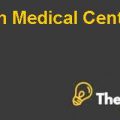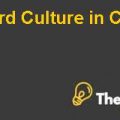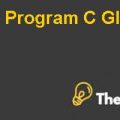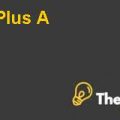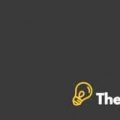Massachusetts General Hospital's Pre-Admission Testing Area (PATA) Case Study Solution
Waiting times
Taking into consideration the development of the regression model;the dependent variable is the total waiting time and the independent variable includes service types, registered nurses and the medical doctors. The length of visit of each patient is calculated by deducting the length of visit from the sum of the waitingtime at vitals/EKG after check-in, RN after vitals and EKG and MD after RN i.e. 100 minutes. Due to the lack of data of EKG, the estimated waiting time are calculated on the basis of the ratios as the actual waiting time at vitals /EKG is 10 minutes which is divided by the total waiting time at Vitals, MD and RN. Similarly, the estimated waiting time at RN & MD is based on the ratios which are calculated by dividing the time takes by RN and MD by the total estimated waiting time of 100 minutes. Assuming that RN5 and MD8 would handle the patient for the VASC service, the total estimated waiting time is 55.03 minutes for the patient to be in the system. Whereas, the estimated waiting time at Vitals/ EKG after check-in is 5.5 minutes, and registered nurses after vitals and EKG is 23.66 minutes. In addition to this, the estimated waiting time at medical doctors after registered, is 25.8 minutes.
Recommendation:
The evaluation of the bottleneck and the capacity analysis of the provider provides a strong foundation to increase the capacity of the registered nurses to remove the bottleneck and reduce the implied utilization, with an improvement in the capacity with core consideration over lowering the patients’ waiting time. Furthermore the measurement of the care providers’ performance is essential to assess and evaluate their actual performance. The management should also stress over the significance of more recruitment and replacement of inefficient staff, in order to meet the shortcoming that the company is confronted with.
Preference of patient to see MD
The walk-in patients had preferred to seek medical care from MDs rather than nurse practitioners in PATA for surgery. Under the triage system; the percentage of out-patientservices provided to patients accounted to around65 percent only. It is also analyzed that 5 percent are those patients who are attended by the nurse practitioners but were referred to a physician. Hence, 73 percent of patients preferred to see MD instead of the nurse practitioner.
Cut downtime technique
To downsize the increased waiting time; the details of the patient could be confirmed electronically through an identification card (ID) that must be issued on the very 1st visit. This card could be used on subsequent visits. This is primarily due to the reason that an increase in the waiting time is based on piling up the patients’ charts on the front desk.Thus, electronic track of information would bring a significant reduction in the waiting time of the patient, resulting in the personal satisfaction and an efficient as well as quick operation management at the hospital. (Matthias Helbig, 2009)
Improving Triage Process
As such, the workload needs to be partially shifted from charge nurse to nurse practitioners in order to efficiently deal with the patients’ each time. For this purpose, it is significantly important to revise the current guidelines in order to facilitate the shifting of workload more equally to NPs. The floating NP triage nurse should replace one triage nurse. The NP triage nurse could efficiently deal with the patients with minor concerns, such as:patients’ information, initials,and doctors' notes. Nurse practitioners could also improve the process of triage by distributing the patient’s inefficient manner, hence reducing the mismatch of the patient with a care provider, who could not provide complete care to the patient.
Implementation Strategy:
To educate providers on the concept of a walk-in clinic; the guidelines should be developed for the productivity levels of registered nurses, particularly. In addition to this, the MGH should facilitate the patients with online check-ins because it would eliminate the unnecessary waiting time. Also, the patients should be enabled make appointments via direct booking system, through which they could select the doctors of choice and select the time they want to get their check-up done. For general appointments and inquiries; the patient should be facilitated to use the automated phone system through which they could either enter their desired extension or speak with a helpful support staff member. This would result in reduced wait time, efficient operation management and greater patient satisfaction. To manage capacity, the ability of the registered nurse should be expended and the general physician should be available to treat patients with simple and viral infections or seasonal diseases.
Conclusion:
MGH is a highly reputable and a leading hospital, which is known for providing efficient healthcare services across the country. The hospital has been facing issues in the management of patients’appointment due toincreased issues being faced in the management by the charge nurse and miscommunication. Thus, the floating NP triage nurse should replace one triage nurse and electronic track of information, which would bring a significant reduction in the waiting time of the patient, resulting in personal satisfaction as well as an efficient and quick operation management at the hospital...........................
This is just a sample partical work. Please place the order on the website to get your own originally done case solution.

